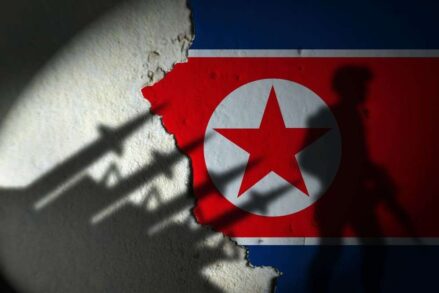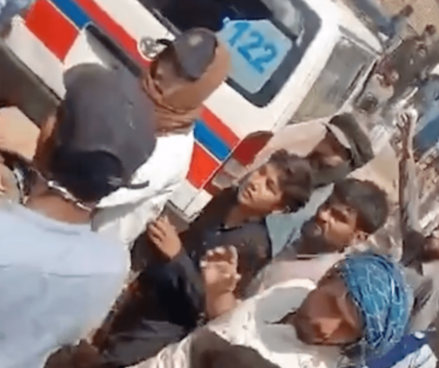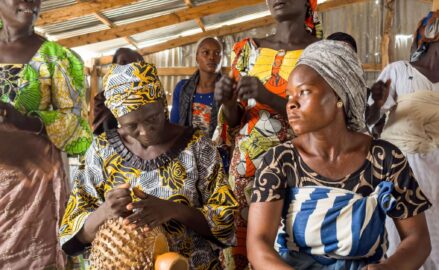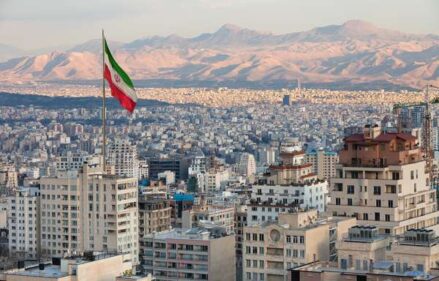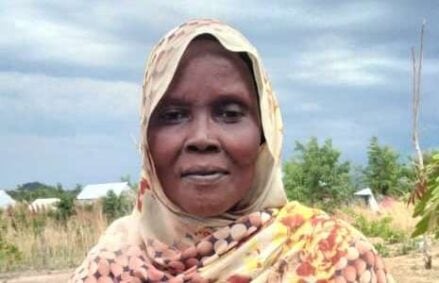Q: Why is June 10, 2014, such an important date?
RBM: It was the day the dreaded Islamic State (IS), which formed a barbarous caliphate in southern Syria, came back to their country of origin and marched into Mosul, Iraq’s second largest city and key to the nation’s oil riches. The manner of their “victory” was what really astonished everyone. Sixty thousand Iraqi troops were ready to repulse them, part of an overall army of 350,000 soldiers funded by more than $40 billion. IS approached with 1,300 fighters, and in only three days all 60,000 troops had fled, following their commander, who was the first to desert.
It also made clear Iraq was utterly tribal. The Sunni groups in the north welcomed IS because they were so fed up with the Shia-dominated government in Baghdad. The groups which was spectacularly corrupt and made up for decades of the repression of Shias under Saddam Hussein’s regime. The invasion bathed IS in an aura of invincibility, and they were quick to crow about their success on social media.
Q: What happened next became very well known.
RBM: Yes, there was terrible bloodletting. The Yazidis, a religious group indigenous to Kurdistan, fled, but where often overtaken. The men were slaughtered, and the women given to the fighters. Around 100,000 Christians from the Ninevah Plains had to flee to the comparative safety of northern Kurdistan. Many were killed, but most were given the chance to convert or leave after being robbed of all their values. The optics leave a lasting impression in the mind. Remember those pictures of dozens of young military cadets from the Iraqi army lined up in front of pits and gunned down by jeering IS executioners? It recalled grainy photos of Jews lined up in front of similar pits by the German SS and shot during WWII. It played out a barbarism we thought we left behind, and made us face anew the reality of human evil.
Q: Now ten years after Mosul, how many Christians have returned?
RBM: Less than half. How do you return to a city where the neighbor who hated you now lives in your house? Or to your village where everything was bulldozed flat? Christians who fled to cities like Erbil have built new lives there. Younger people in particular have no wish to return, with little connection to what was home for their parents and grandparents. And then there are those who emigrated from Iraq, and who can blame them? They often have relatives who sponsor them, and who are we to say, “Stay in the Middle East and just deal with the fact that your children will always be at risk from violence?” It is their call.
Q: Who were Islamic State and where did they come from?
RBM: IS began in Iraq in 2006. It was a militia comprised of former Iraqi government employees who had been dismissed by US authorities. The problem was they were numerous, well-armed, competent, and desperate. But initially it was not a strongly Islamist group. This changed after a few years when they initially aligned with Al Qaeda, becoming Islamic State in Syria (ISIS), taking advantage of the conflict in Syria to move its operational center across the border. There was a total vacuum in that region. No one wanted to engage them. Bashar al-Assad, the embattled president of Syria, left ISIS alone to show the West, “This is what you get when you won’t back me.”
The large regional powers of Iran and Saudi Arabia found the buffer zone that ISIS formed between them quite useful. Turkey traded oil with them. They made Raqqa their administrative center and expanded their territory. With their new leader Abu Bakr al-Baghdadi, who emerged in 2010, they proclaimed a Caliphate when they crossed into northern Iraq.
Q: Why did IS become so well known?
RBM: They became the orchestrators of the ultimate horror show of the time. It was all about the gore. They threw people off public towers, executed hundreds in front of cameras, and enslaved women without qualm. It was choreographed barbarism. Sadly, they were brilliant at publicity. They were posting videos to YouTube while Al Qaeda was still sending cassettes out of caves in Afghanistan. IS celebrated the violence and used it to create terror.
More than 30,000 young people from around the world flocked to join them, drawn by the bloodlust and the seemingly invincible success of it all. A young man in the UK told me at the time, “It’s the first caliphate for hundreds of years, so it shows that our God is strong … we want to be part of that.” A man from Egypt calmly told me on an airplane in 2015, “Well, I want to change the world as a jihadist, so there is only one destination for me: Islamic State.” The West became scared, not only by the new combination of fearful violence and sophisticated publicity, but also by the idea that young Muslims in their own societies would be radicalized to rise and commit atrocities in their home countries. For Islamic extremists, nothing convinces like success.
Q: Can we learn anything about their rise?
RBM: Elie Wiesel was once asked, “How do you stop a Hitler?” He answered, “Before they become Hitler.” The vital lesson is to stop a vacuum in society from opening. A vacuum really is a situation where the forces of moderation fail to maintain stability. When moderates fail, extremists triumph, because it becomes so much easier for them to capture the culture.
Q: But eventually IS began to be beaten back?
RBM: After their triumph in Mosul, the US began Operation Inherent Resolve in October 2014, with the goal of destroying ISIS as a state. This campaign utilized American and Western air power in support of local ground troops. In Syria, most of the soldiers were provided by Kurdish groups. In Iraq, it was a combination of Kurd and Shia militias, many of whom were supported by Iran. It’s a rare example of Iran and the US on the same side and had only happened before in Afghanistan in 2001-2002.
It took a while, but by 2017, they were destroyed as a state. The myth that IS was made up of great fighters was exposed more as rhetoric than reality. However, expelling them out of Mosul still took months of close fighting and left much of that grand city in ruins. Many IS leaders fled and were killed in special operations afterwards. Al-Baghdadi detonated his suicide vest in October 2019 when US troops entered the tunnel he was hiding in. Gruesome to the last, he took the lives of two of his young children in the explosion
Q: Are they finished then?
RBM: Sort of. There is some evidence of regrouping in the hills in northern Iraq. There’s no chance, though, of them forming a state again. A more lasting effect was that many ISIS fighters fled south to sub-Saharan Africa, lending money and sharing expertise with the burgeoning Islamic extremist movements there.
Q: What specific expertise did they share?
RBM: They are adept in running criminal enterprises. Jihadist movements always need money. These people are experts in kidnapping, drug running, arms smuggling, and extortion of local populations. Any racket, and they are all over it. Jihadis movements must have money to recruit. In sub-Saharan Africa, there are millions of young men between 17 and 24 without education or jobs. Often the only way to earn a salary and support a family is by joining one of these extremist movements. Ten years ago, there were roughly five major jihadi movements in the Sahel. Now there are over twenty. It’s massively destabilizing. It also helps that nearby Libya is a warlord state awash with arms, so these groups are not likely to run out of ammunition.
Q: Looking back ten years after Mosul, was the West right to be so frightened of IS?
RBM: The West got one thing right and one thing wrong. They were right to realize the vast symbolic power of IS which was out of all proportion to its size. The video-game generation came to the forefront, helping create the most attractive jihadist propaganda ever seen. Sadly, it has set a high standard in jihadi recruitment. But the thing people got wrong was—and we said this at the time—Islamic State was always going to be a 10-year phenomenon. However, Islamic extremism has deeper roots and will last for decades. The roots are still in place. IS was more a blip than a trend.
Q: What are those roots?
RBM: In the Sunni Muslim world there are two, and they have not receded in strength. The first is Saudi Arabia’s funding of its extreme fundamentalist version of Islam called Wahhabism. It imposes Sharia law, relegates women to second-class citizenship, and regards Shia and Sufi Muslims as heretics and apostates to be persecuted alongside Christians and Jews. Saudi Arabia promotes this version of Islam around the world with its billions of petrol-dollars. Travel around Indonesia and sub-Saharan Africa, and you see their mosques erected and their preachers trained and set in place, all promoting this sectarian version of Islam. The ideologies of al-Qaeda and ISIS also draw a great deal from Wahhabism.
The second tap root—and this gets overlooked quite easily—is the role the Pakistan Intelligence Service plays in supporting Taliban-type movements, especially in Asia. I once sent a person undercover to infiltrate a jihadi group. He was first sent to Saudi Arabia to get money and learn the doctrines, then to Pakistan to learn the tactics of building of a movement, to make bombs and to handle weapons of assassination.
Both Pakistan and Saudi Arabia are designated as Countries of Particular Concern by the US State Department for engaging in or tolerating particularly severe violations of religious freedom. Though one of the consequences of making the list is having sanctions applied, they haven’t been enforced, due to a Presidential decision.
As long as these two taproots are in place, Islamic extremism of the Sunni variety will remain a major destabilizing factor in the world we must live in. People need to guard against thinking that because ISIS is largely vanquished, the thread of Islamic militancy has receded. In any case, Osama bin Laden always said that the creation of a Caliphate would be a major tactical mistake.
Q: Why was that?
RBM: Bin Laden taught that the goal of al-Qaeda was to form a global Islamic state, and that it would be carried out through the numerical growth of suitably radicalized Muslim communities and nations. Of course, he approved of violence and sponsored it, but he saw a Muslim world coming to fruition through demography. He warned that if you try to form a Caliphate, you must defend a territory against local and world powers that will soon muster overwhelming force to wipe you out. Events proved him correct. That’s when al-Baghdadi split from him, and over the question of killing other Muslims. ISIS taught that any Muslim who was not a supporter of the Caliphate was an infidel and should be killed.
Q: Ten years after Mosul, does the horror of ISIS live on? And how did Christians react?
RBM: There were some very high-profile martyrs and stories. Kayla Mueller was a 25-year-old Christian from Arizona who joined a Syrian friend in Doctors Without Borders. She was captured and subjected to repeated assaults by al-Baghdadi himself before she was killed 18 months later. Approximately 18 Westerners were taken prisoner by ISIS. The best known was James Foley, an American journalist captured in 2012. He was a Christian who converted to Islam during his captivity, though it’s difficult to know what to read into that. His horrific beheading in 2014 beamed live on social media shocked the world. But it prompted one of the most astonishing acts of Christian forgiveness by his parents. His mother later launched the James W. Foley Legacy Foundation to advocate for American hostages held abroad and promote safety for aspiring journalists.
ISIS was front page news. Christians in the West during the time were able to make a direct connection from the headlines everyone was reading to the need to remember and pray for the plight of persecuted Christians and other groups. A higher level of atrocity today in Northern Nigeria, for example, does not seem to elicit the same outpouring.
Q: Why is that?
RBM: I suspect it’s something very basic, and no one is to blame. But the reality is that the antics of Islamic State had the potential to affect everyone. It impinged on the average Westerner’s lived world. I knew a family who lost their son who snuck off to fight for IS. And everyone was worried that the videos IS were making could perhaps lead to their neighbor’s child radicalizing themself and turning violent in their own neighborhood. The killings of Christians in northern Nigeria do not affect our lived world to the same extent. Except perhaps in you live in Europe where you know that illegal migration is partly driven by violence in these regions.
Q: Looking back from the perspective of today, what sticks in your mind and heart?
RBM: Ten years after Mosul, I look forward to the story improving. Many Muslims turned to Christianity, sickened by the violence, and churches grew remarkably. Some centuries-long antagonisms between ancient denominations were buried in the prayer movements that formed. And there were amazing local heroes who risked everything to free local prisoners from the hands of ISIS. One man I knew sprang 232 prisoners. We cannot tell his story publicly yet, but he represents a level of Christian bravery that will inspire generations.
Two images stick in my mind, though. One is a group of Christians bricking up a secret room in their ancient Orthodox church to conceal their collection of ancient scripture and commentary manuscripts. I’ve handled those texts. Thick, bound on vellum, hand copied, and dating as far back as the 9th century. I would’ve loved to have been there as the wall was dismantled and the scriptures were handed back out to willing hands.
The other image is that IS left a booby-trapped Bible in one of the churches in Mosul. What sick mind boobytraps a Bible? It proves to me there is an evil madness in these movements that can only be understood in terms of the dark forces. Jesus warned us about them in the Gospels
About Dr. Ron Boyd-MacMillan
Ron is the Director of Global Strategy and Research at Global Christian Relief. A leading expert on Christian persecution, he is also the author of Faith that Endures: The Essential Guide to the Persecuted Church—the first comprehensive text on how to understand, support, and learn from the persecuted church.



